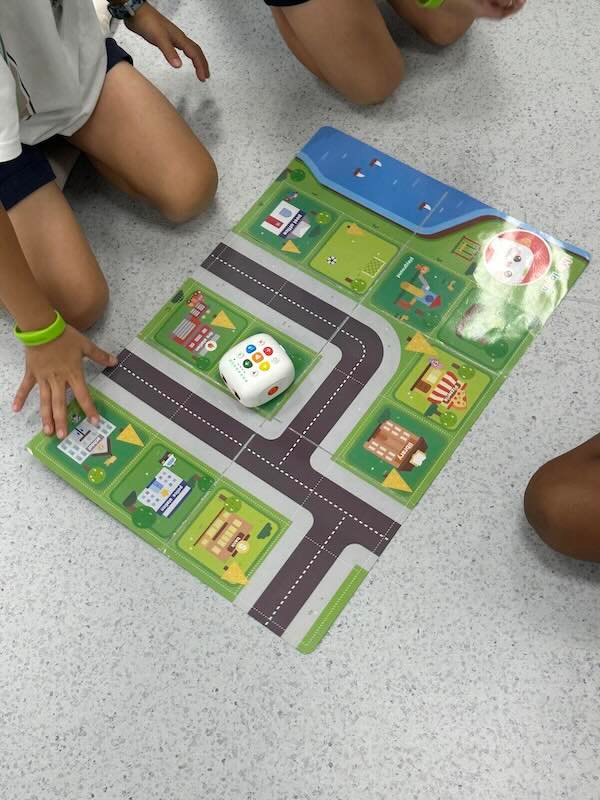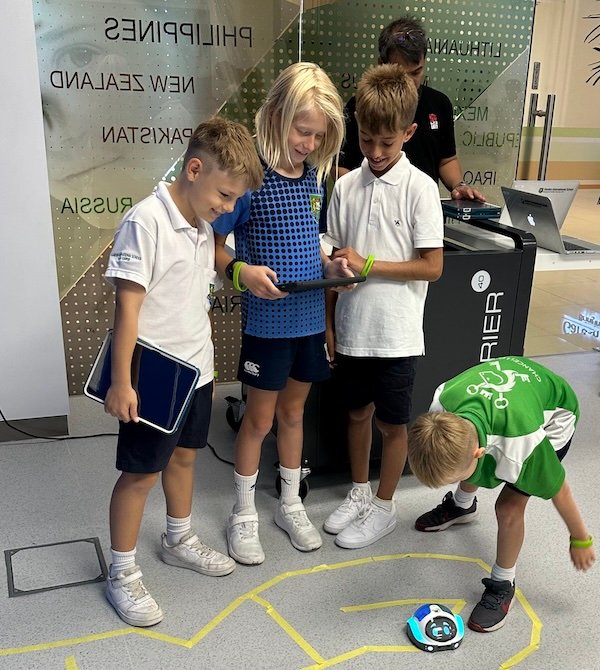Computational thinking is more than pressing buttons on a robot. It involves sequencing (ordering steps), iteration (repeating steps), and selection (making decisions based on conditions). These ideas develop gradually as children move through Piaget’s stages of cognitive growth. Unplugged activities and tools like Bee-Bots, Tell-Tale, and Loti-Bots help learners touch, test, and refine these ideas in age-appropriate ways.

Sensorimotor Stage (0–2 years): Cause and Effect Foundations
At this age, children explore the world physically. While they are not yet learning coding concepts, they are building the base for later skills.
Unplugged Ideas:
- Push a toy car to see how far it goes.
- Drop blocks repeatedly to see they always fall down.
This repeated play is the earliest form of iteration: testing the same action over and over to see a consistent result.
Preoperational Stage (2–7 years): Early Sequencing and Simple Repeats
Children now use symbols and imagination, but thinking is still concrete. They can start with sequencing and experience early ideas of iteration through repetition in play.
Unplugged Activities:
- Action Algorithms: “Clap → Jump → Turn” (sequence). Repeat the same set twice to model iteration.
- Dance Loops: Repeat a short set of moves several times to show iteration in a fun way.
- Treasure Hunt: Give step-by-step instructions to reach a toy. Add “If you find a block in the way, turn right” to introduce basic selection.
Bee-Bots:
- Children press arrows to make the robot move step by step.
- Sequencing is the main focus, but repetition of button presses is a stepping stone to iteration.
- Teachers can highlight this by saying “Instead of pressing forward 3 times, think of it as a little loop.”
Concrete Operational Stage (7–10 years): Logical Reasoning, Iteration, and Selection
Children now think more logically and can understand repeating patterns and conditional rules.
Unplugged Activities:
- If–Then Games: Play “Simon Says” with conditions, e.g. “If I clap once, hop. If I clap twice, spin.” This introduces selection.
- Sorting Networks: Children repeat a compare-and-swap process until the sequence is sorted, showing iteration.
- Debugging Challenges: Give faulty instructions and let learners repeat and fix steps until they get the right result.
Tell-Tale:
- Learners record and order story tiles.
- They can add alternative branches: “If the hero finds the key → open the door, else → find another path” (selection).
- Repeating story segments or sound effects can model iteration.

Transition to Formal Operations (10+ years): Abstract Thinking with Loti-Bot
Older learners can now imagine loops and conditions before testing them. They can shift from hands-on steps to planning and abstraction.
Unplugged Activities:
- Paper Programming: Write an algorithm for a friend to follow with “repeat x times” and “if/else” commands.
- Logic Puzzles: Use branching flowcharts to solve problems.
Loti-Bot:
- Supports both button programming and block coding.
- Students can create loops (iteration) to repeat a pattern of movements.
- They can add conditional statements (selection) using sensors, e.g. “If the Loti-Bot sees a line, then turn.”
- Example: Program the Loti-Bot to navigate a maze by repeating forward steps and choosing turns when it reaches an obstacle.

Conclusion
Computational Thinking is a natural match for Piaget’s theories and understanding these ideas, really helps us to plan lessons that connect with students in a way that is both age appropriate and engaging.
